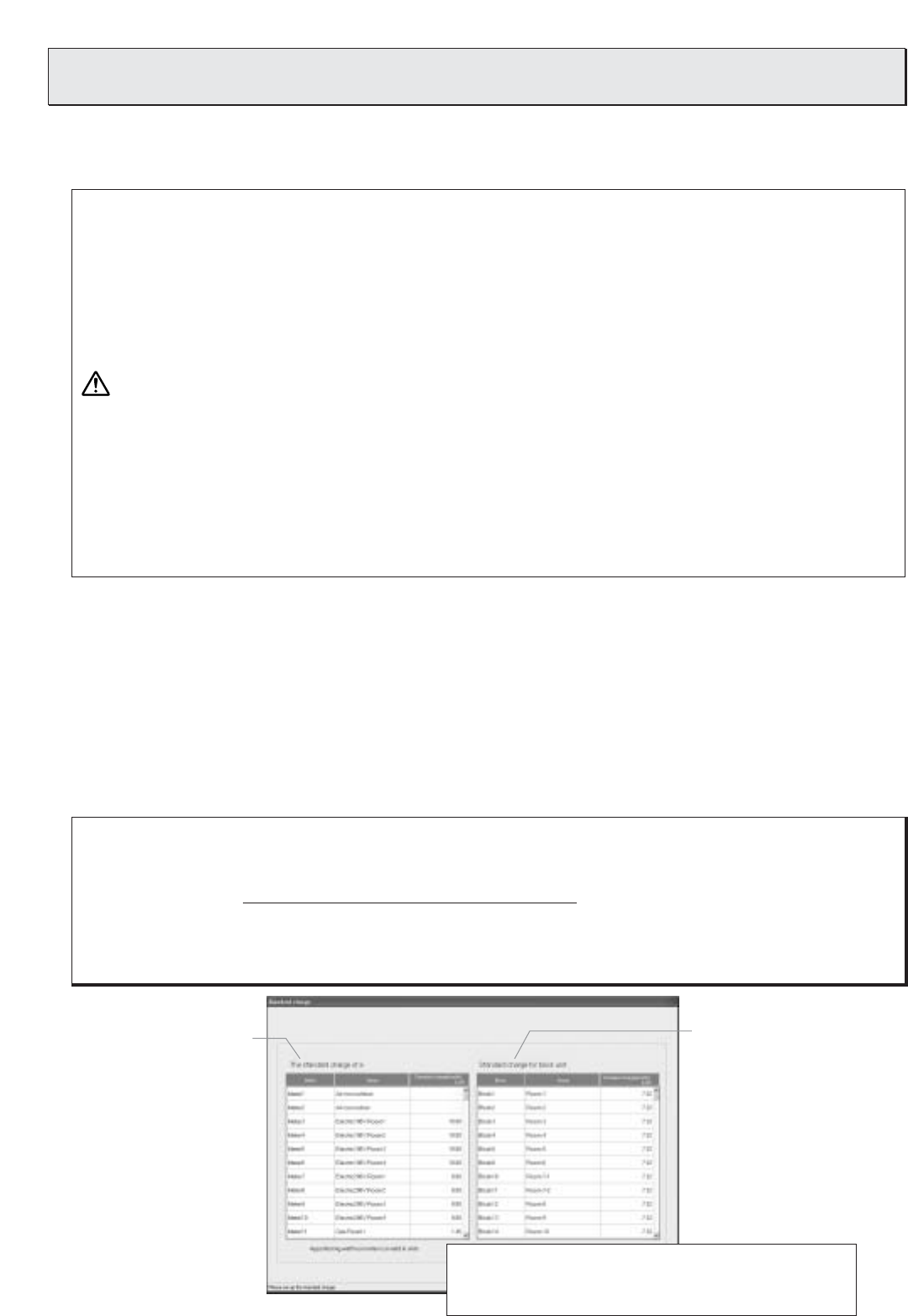
40
8. Step 5: Charging Function of Energy Charge Measuring
This step is to set the charging function of measuring instruments to be performed by TG-2000A.
This setting is required to use the charging function by measuring instruments. Since this function is optional,
license registration to the G-50A unit is essential to use the charging function by measuring instruments.
8.1 Outline
Before explaining the charging function by measuring instruments, each term used here is introduced.
(1) What is the standard charge?
This indicates the contracted standard charge of each measuring instrument (electric power, gas, city water, calorie meter).
The standard charge is set in the unit of each tenant (charge block) for air conditioning energy charging. While for the direct
reading of other measuring instruments, it is set in the unit of measuring instrument.
In the case of electric power used for air conditioning, the standard charge represents the contracted charge of air
conditioning system among the contracted electric power charge of whole building per tenant. The monthly charge is fixed.
[Example of calculation method of standard charge]
1
The contract charge of air conditioning among the contract electric charge of a whole building is calculated.
Standard charge (Yen) = × Contract electric capacity × Capacity unit price
2
This standard charge is divided in proportion with the air conditioning electric capacity per tenant (charge
block).
Air conditioner electric capacity of control target
Total electric system capacity of whole building
Standard charge of charge block
In the case of the apportioned
system, the standard charge is
set in a unit of the charge block.
Standard charge of
measuring equipment
In the case of direct reading
type measuring equipment,
the standard charge is set in
a unit of the measuring
equipment.
The standard charge can not be set in the case of the
electric power manual input system. It shall be added
separately.
Figure 8-1 TG-2000A standard charge setting screen
[RE: Apportioning of air conditioning power consumption]
Since the watt-hour meter value of power consumption is apportioned by judging the operation status of the indoor unit from detailed
communication between the indoor and outdoor unit, this value can not be applied to the business certificate legally defined.
The same limitation is applied to the case of direct reading of measuring instrument unit.
In order to employ this system, therefore, it is recommended to conclude an agreement or contract between the building owner and
tenants stipulating that [The air conditioning charge should be collected through apportioned calculation based on the operation status
(including the temporary processing measure at trouble)].
(1) This system does not measure the power consumption of each indoor unit directly.
(2) As the system estimates the power consumption of air conditioning, the valued obtained herewith may not be applied to the certificate
of business transaction.
(3) Even if the operation time of air conditioners is same, the power consumption differs depending on the operating status.
(4) As air conditioners are powered even when they are stopping, the power consumption will be charged.
(5) One watt-hour meter should be connected to one air conditioner. If connected to plural air conditioners, an error will be caused due to
the apportioning of total power consumption.
(6) At the failure of PC, G-50A or PLC, the average apportioned value in the past may be adapted for temporary transaction as a solution.
(7) As the power consumption and gas consumption is taken in the form of a pulse, the performance and accuracy are depending on that
of the measuring instruments employed. Under this circumstance, we are not liable for the performance and accuracy presented.
(8) As the resultant air conditioning charge is rounded to the nearest whole number at a figure not shown here, please note that an error
generates between the air conditioning charge of watt-hour meters and that of the block total.
CAUTION


















